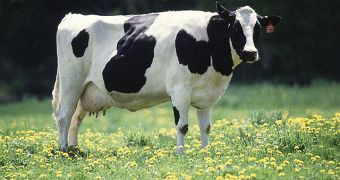Though solar power, geothermal energy and eolian energy are the three main resources that scientists are trying to harness as efficiently as possible, there is a certain natural resource that may turn out to be far more accessible, at least in the short term, than these three. Said resource might not be the first guess of most people, however, considering that it is generally seen as waste in need of disposal. Commonly known as manure, this natural substance has fallen under the gaze of HP.
HP recently presented a research paper at the ASME International Conference on Energy Sustainability in Phoenix, Arizona. In it, the company goes to great lengths to explain how the manure output of cows, along with the heat generation of data centers, can suffice to economically and environmentally sustain such facilities. HP also states that the multitude of dairy farms in the US makes such an idea feasible.
HP explains how a farm of 10,000 dairy cows could power, on its own, a 1-megawatt data center. Apparently, by using the heat from the data center itself, the anaerobic digestion of animal waste can be made more efficiently, which means that it would produce more methane, which, in turn, can be used as a power source. Basically, such a procedure would solve the waste problems dairy farms are faced with and the energy demands of modern data centers at one fell swoop. Using the methane for such a task would also significantly reduce its impact upon the environment, as well as bring a financial benefit to farmers.
“The idea of using animal waste to generate energy has been around for centuries, with manure being used every day in remote villages to generate heat for cooking,” Tom Christian, principal research scientist, Sustainable IT Ecosystem Lab, HP, said. “The new idea that we are presenting in this research is to create a symbiotic relationship between farms and the IT ecosystem that can benefit the farm, the data center and the environment.”

 14 DAY TRIAL //
14 DAY TRIAL //